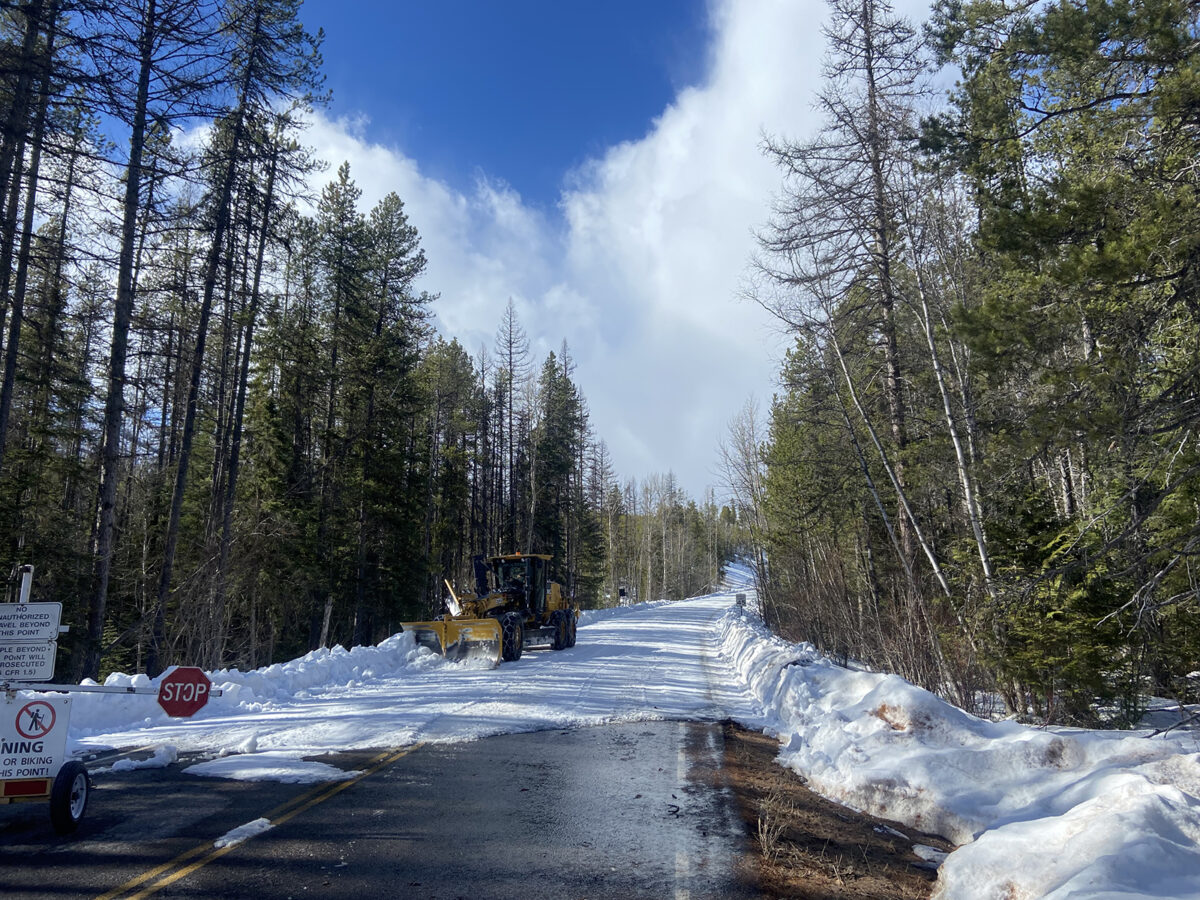Snowplows Begin Spring Ritual of Clearing Glacier National Park Roads
Road crews cleared Camas Road over the weekend to make way for construction equipment; Going-to-the-Sun Road remains closed on the west side to all traffic including hikers and bikers until May 5
By Tristan Scott
Glacier National Park’s fleet of snowplows and excavators began the daunting task of clearing the park’s scenic thoroughfares on April 1, forging through a winter’s worth of snow and heralding springtime in northwest Montana.
Over the weekend, plow crews on Glacier’s west side cleared Camas Road to make way for heavy equipment and machinery as contractors prepare for a busy summer of rehabilitation work along Going-to-the-Sun Road, which remains closed on the west side to all traffic, including hikers and bikers, until May 5.
Crews also started plowing the Going-to-the-Sun Road on April 1 from Lake McDonald Lodge to North Lake McDonald Road and to the Lake McDonald Ranger Station to allow access for contractors, who are scheduled to begin replacing the Upper McDonald Creek Bridge. Plowing continues today.
The bridge provides access to the northwest shore of Lake McDonald, including private homes, the ranger station and trailheads. The new bridge will be built approximately 30 feet upstream of the existing bridge, requiring realignment of the road approaches.

There will be a full closure during construction to North Lake McDonald Road at the intersection with the Going-to-the-Sun Road. There will be no public access, including vehicles, hiking, or biking and no parking at this intersection. Visitors intending on hiking the Johns Lake Loop Trail will need to turn around where trail closed signs are posted. Hikers will not be able to complete the loop.
Bridge construction is expected to go through the entire 2023 construction season and conclude in late 2024.
On March 15, crews started plowing Chief Mountain Highway between Highway 89 and the U.S.-Canada border. They’ve also plowed the Lake McDonald water tank, and Sprague and Apgar campgrounds, and the Glacier Institute facility along Quarter Circle Bridge Road to allow the snow-packed roads to melt out.
On March 20, the road crews plowed the bicycle paths around Apgar and West Glacier to promote melt.
“These paths are no longer snow covered or used as ski trails and are again open to leashed pets,” according to Glacier Park Public Information Officer Gina Kerzman.
On March 27, crews started plowing from the park boundary into Two Medicine.
Construction on the Lake McDonald Utilities Project is slated to continue along Going-to-the-Sun Road from the south end of Lake McDonald near Apgar Campground to Sprague Creek Campground until May 15, 2023; however, park officials anticipate visitors will have vehicle and recreational access on Going-to-the-Sun Road up to Lake McDonald Lodge by May 5 at 6 a.m.
“After that, they can hike or bike during construction and are advised to use caution and watch for potholes and uneven surfaces,” Kerzman said Monday.
After the road opens on May 5, road crew closures will be in place Monday through Thursday during plowing. Visitors may advance to the Avalanche hazard closure when road crews are not working. All pull-outs in the construction zone along Lake McDonald are anticipated to be closed through late fall 2023.
According to Kerzman, the Sun Road will open to vehicle traffic to Avalanche Campground “sometime this spring per usual, but I do not have a date for exactly when it will open.”
Camas Road remains closed to public vehicle traffic until it melts out, although hikers and bikers may now take advantage of the vehicle closure by exploring the stretch of two-lane road between Apgar and the North Fork Flathead River, where views of Lake McDonald and the historic Robert Fire dominate the landscape.
RESTRICTIONS
Road crew closures are in place Monday through Thursday during plowing. Visitors may advance to the Avalanche Hazard Closure when road crews are not working. An Avalanche Hazard Closure is in place at all times. Progressive closure locations are determined weekly on Thursdays. Visitors are not permitted to go beyond hiker/biker closures. Visitors who disobey the signage are putting themselves and park rangers at risk. Violators could face a hefty fine.
KNOW BEFORE YOU GO
Pedal assisted E-bikes are only allowed if the motor is less than 750 watts and engaged only while pedaling. Throttles are not permitted. Be prepared. Falling rocks can cause injuries, flat tires, and crashes. Avalanches are possible especially with rapid temperature changes. Pay attention and keep an ear out. Wildlife on the road can cause long delays. Do not approach wildlife or try to encourage their progress. High speed riders and blind corners can cause collisions. Stay in your lane and stay in control. Changing temperatures could lead to hypothermia if you’re not prepared. Carry layers, gloves, and waterproof gear. Prepare for changing mountain weather.
For road status and plowing updates, as well as additional information about hiker/biker road crew closures, visit the park’s website at https://www.nps.gov/glac/planyourvisit/directions.ht
Vehicle reservations are required for access to Going-to-the-Sun Road and the North Fork between May 26 and Sept. 10 between 6 a.m. and 3 p.m. Between July 1 and Sept. 10, reservations are required to access Many Glacier, Two Medicine and Going-to-the-Sun Road from Rising Sun from 6 a.m. to 3 p.m.
A $20 per-person entrance fee is required of visitors traveling on foot or bicycle until April 30.